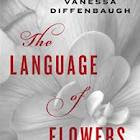Even more to the point, I have too many well-written books queued up in my list of must-reads. I've been waiting for Hilary Mantel's follow-up to Wolf Hall since--well, since I read Wolf Hall and knew there had to be a sequel. (Clue: Wolf Hall was the home of Jane Seymour's family, not Catherine;s or Anne's). In truth, even though the main character is Thomas Cromwell, not Henry VIII himself, the king actually paves the way for five sequels, covering all his wives (divorced, beheaded, died, divorced, beheaded, survived.)
I love a good sprawling historical novel, and as I am revising my Brit Lit syllabus for the coming semester, I am more than thrilled to dig into the lives of this particular royal family in this era.
Once again the protagonist of the novel is Thomas Cromwell, who rose from poverty and an abusive childhood to the king's inner circle, wielding more power than the higher born in Henry's inner circle. While in the first book, he was working through the complications allowing the king to annul his first marriage (with or without the blessings of Rome) in order the allow him to marry Anne Boleyn--and possibly father a male heir--he finds himself in this book with a new challenge as the king loses his enchantment with Anne Boleyn in favor of one of her ladies-in-waiting, Jane Seymour.
To accomplish this end, Anne can't merely be sent away. As any student of British history (or any tourist to the Tower of London) knows, heads rolled. I was not aware, though, the lengths to which the king's supporters went to prove in court the queen's (or former queen's) treachery (which would have been considered mere adultery had she not been married to the king).
In this book, Mantel managed to smooth over some pronoun reference problems from the first book (when I often had to remind myself that the "he" to whom she referred was probably Thomas Cromwell. I still had to wrestle with the characters who had multiple names or titles, but I had an easier go of it this time around. (Since there were fewer Thomases still living by the second novel--Thomas More and others having been dispatched), the duplication of names was less of a problem too.
The question that remained unanswered for me, though, was how Jane Seymour could have gone so readily into a marriage--even to a king--in light of the fate of her two predecessors. I guess readers will either have to wait until Mantel completes that story or dig into the history books.









